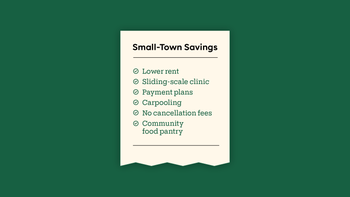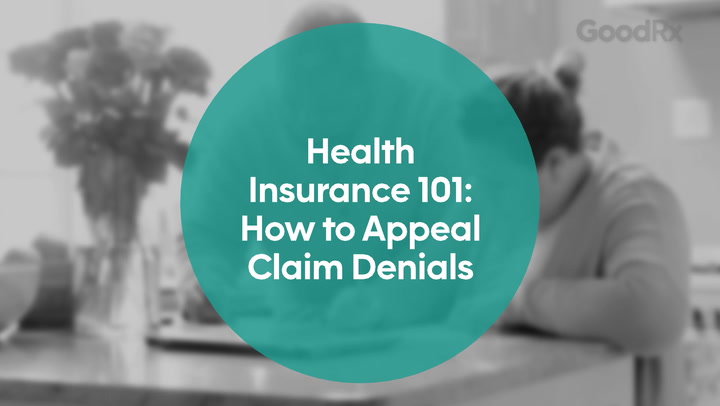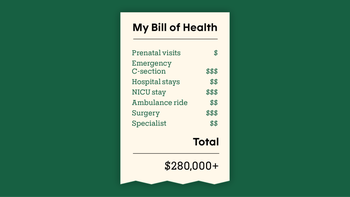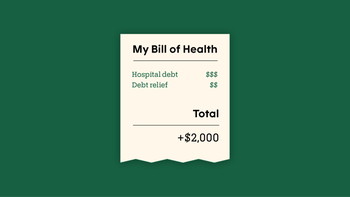
Definition
Medical debt results from unpaid bills created while receiving healthcare services, including dental care.
Researchers have found that U.S. consumers have high medical debt because of:
Rising healthcare prices
Increased cost-sharing, known as out-of-pocket costs
Lack of health insurance
Medical debt exceeds the amount owed on credit cards, utilities, and phone bills combined. It can affect your credit score, and healthcare-related debt accounts for most of the collections on consumer credit reports.
People who can’t pay medical bills risk more than credit and budget problems, though. They may skip medical care and avoid filling prescription medications because they can’t afford them — which creates public health concerns.
This guide offers ways to prevent medical debt and provides tips that you can use if you have healthcare bills you can’t pay.
Ask questions upfront and get estimates
You have more power than ever before to know — and potentially control — the cost of your care by asking questions upfront.
Pricing estimate tools from hospitals and health insurance plans can help you calculate costs in advance:
Hospital price transparency: Since 2021, hospitals have been required to publish standard charges for services that can be scheduled.
Health plan price transparency: Since 2022, health insurance plans have been required to publish price information on certain covered treatments, services, and medications on their websites.
You can also see costs for certain outpatient services on Medicare’s procedure price lookup.
If you don’t have insurance or plan to self-pay regardless of insurance status, you can request a good faith estimate (GFE) of your healthcare costs upfront. GFEs are part of the No Surprises Act, which aims to protect patients from surprise medical bills. You can dispute the final bill if it’s at least $400 more than the GFE.
Tips if you can’t pay your medical bills
Unpaid healthcare bills can lead to serious financial consequences — and even poorer health.
Here are 10 actions you can take when you have medical bills you can’t afford:
Make sure the debt is legally due.
Verify the charges are accurate.
Request a discount.
Seek debt forgiveness or debt settlement.
Ask about financial assistance programs.
See if you qualify for charity care or indigent care programs.
Set up a payment plan.
Seek special help if you’re a veteran.
Consider debt consolidation.
Use bankruptcy as a last resort.
Assistance programs
Assistance programs can help you avoid, reduce, and pay medical bills. Depending on your needs, you could qualify for:
Financial assistance programs: Typically, hospitals offer financial assistance programs that may cover all or part of your medical bills. Income-based indigent care and charity care are also considered financial assistance programs.
Patient assistance programs: Known as PAPs, pharmaceutical companies, nonprofits, and government agencies offer these programs to provide free medications or discounts on your prescriptions. You must be uninsured or underinsured to qualify. You have specific options if you have a cancer diagnosis and don’t have insurance.
Help from nonprofit organizations: These groups help people pay medical bills. For instance, the PAN Foundation and the HealthWell Foundation assist people who are underinsured. Both have condition-based funds that can help you with copays and transportation as well as medications.
You may also qualify for free and low-cost healthcare.
Medical financing and debt consolidation
Medical financing can help you receive care now and pay later in installments. You can also use financing to consolidate medical debt into affordable payments and avoid debt collection.
Healthcare financing options include:
Medical loan
Care Now, Pay Later, a type of medical loan program
Debt consolidation is a little different. Consolidation can be combined with other debt reduction strategies and may involve leveraging assets. Your options include:
Using a personal loan
Opening a home equity line of credit (HELOC)
Tapping a retirement account, such as a 401(k) or Roth IRA
Getting a new credit card
Reaching out to organizations that can help you clear medical debt
Bankruptcy
Yes, you can file bankruptcy for medical debt. But declaring bankruptcy to pay medical debt should be considered a last resort. This means you have exhausted all other options.
Typically, you will choose between two kinds of bankruptcy to address medical debt:
Chapter 7: Known as “straight bankruptcy,” this requires you to give up property to eliminate or liquidate your debt.
Chapter 13: This reorganizes your debt and requires you to pay at least some creditors.
Financial toxicity
Medical debt can impact more than your finances. It can actually make you sick — or sicker.
The connection between medical debt and poorer health is called financial toxicity. This term acknowledges how financial hardship caused by a health condition can have a negative impact on individuals and their families.
Financial toxicity begins to show up in households when medical bills affect whether you take prescribed medication or if you can pay for housing or food.
It’s important to talk to all of your healthcare providers if you are concerned about the cost of your treatment. You may be able to find alternative prescriptions or assistance programs to help you with healthcare costs.
Common concerns
Yes, you may be able to remove medical debt from your credit report. In fact, you may have had some negative items taken off recently. That’s because the three consumer credit bureaus no longer report paid medical debt. They also wait a year before reporting unpaid medical debt and no longer list medical debts less than $500.
You can also have medical debt removed from your credit report by disputing an error, asking for a goodwill deletion, or settling your medical debt with a “pay for delete” arrangement.
You have rights in medical debt collection that require you to be the person responsible for the unpaid amount and to prevent harassment from debt collectors. There is a limit on the amount of time collectors can pursue you for a legitimate debt — including statutes of limitations on filing a lawsuit against you. You also are entitled to avenues to report deceptive collection tactics.
Yes, you can negotiate medical bills. Negotiation can help you reduce or eliminate medical debt. You also can get more time to pay. Taking action early enough can prevent negative items from appearing on your credit report. If you have insurance, make sure your health plan has paid its full share of the bill.
Ask for help. Be polite and be honest. If negotiation isn’t successful, don’t ignore the bill. Follow our tips for handling unaffordable medical debt.
Yes, you may be able to use a retirement account to pay medical debt. Certain retirement accounts allow you to take a hardship withdrawal for medical bills without penalty. According to the IRS, a hardship is considered the inability to pay for an “immediate and heavy financial need” under certain circumstances. Those situations include medical expenses for you, your spouse, dependents, or a beneficiary.
The medical debt of a deceased person is typically paid with the resources they leave behind. Another person may be financially responsible if they co-signed for the debt, it’s part of a joint account, or they are the surviving spouse in a state where marital assets are jointly owned.
It’s important to notify creditors and at least one credit bureau when someone dies. You may be able to negotiate and reduce or eliminate the medical debt of a deceased loved one.
References
CMS.gov. (2022). Hospital price transparency.
CMS.gov. (2023). Hospital price transparency – consumers.
CMS.gov. (2023). Transparency in coverage.
CMS.gov. (2023). Use of pricing information published under the transparency in coverage final rule.
Cohen, R. A., et al. (2023). Problems paying medical bills: United States, 2021. National Health Statistics Reports.
Consumer Financial Protection Bureau. (2023). Market snapshot: An update on third-party debt collections tradelines reporting.
Internal Revenue Service. (2022). Retirement topics – hardship distributions.
Kluender, R., et al. (2021). Medical debt in the US, 2009-2020. JAMA.
McNamara, J. (2023). Debt collectors re-evaluate medical debt furnishing in light of data integrity issues. Consumer Financial Protection Bureau.





























